Notes on Pseudocode Questions from AP Classroom
Initial Overview
- Strange to get used to and requires the collegeboard reference sheet here
- Once you know how to use it, super self explanatory and easy to understand
- Code blocks are limited but intuitive
- Visually simple to work with
Things I noted:
- A lot of pseudo problems are worded weirdly and some code blocks are hard to comprehend
- Functions like can_move and MOD need you to understand their specific use case pre solving
PROBLEMS I NOTED
Example 1:
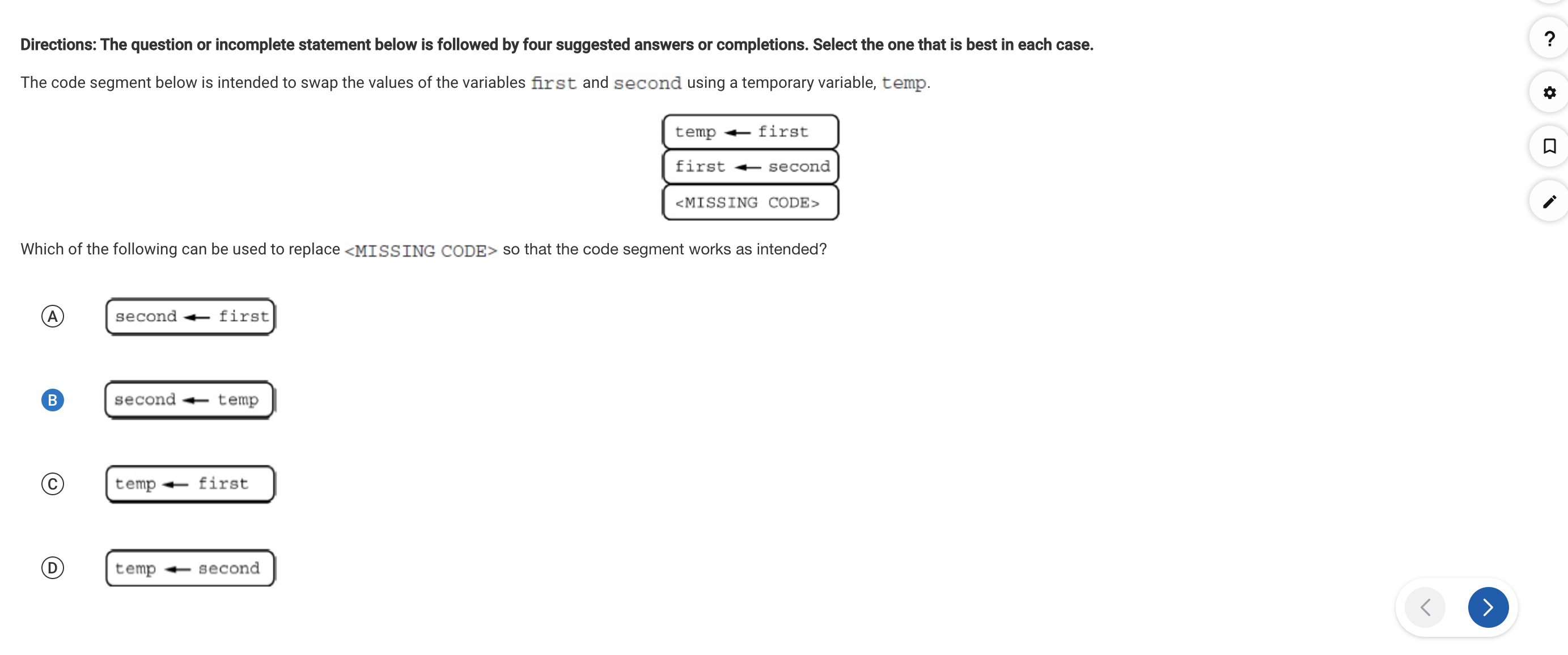
- pre this question, didnt understand what arrows meant so I needed to look it up and found the answer at this link
- post unnderstanding arrows it was just a simple logic problem
Example 2:

- Hard to understand at first with the graphing and circles
- Once I figured out the function code it was a pretty easy problem to solve, just process of elimination and pseudo knowledge
Example 3:
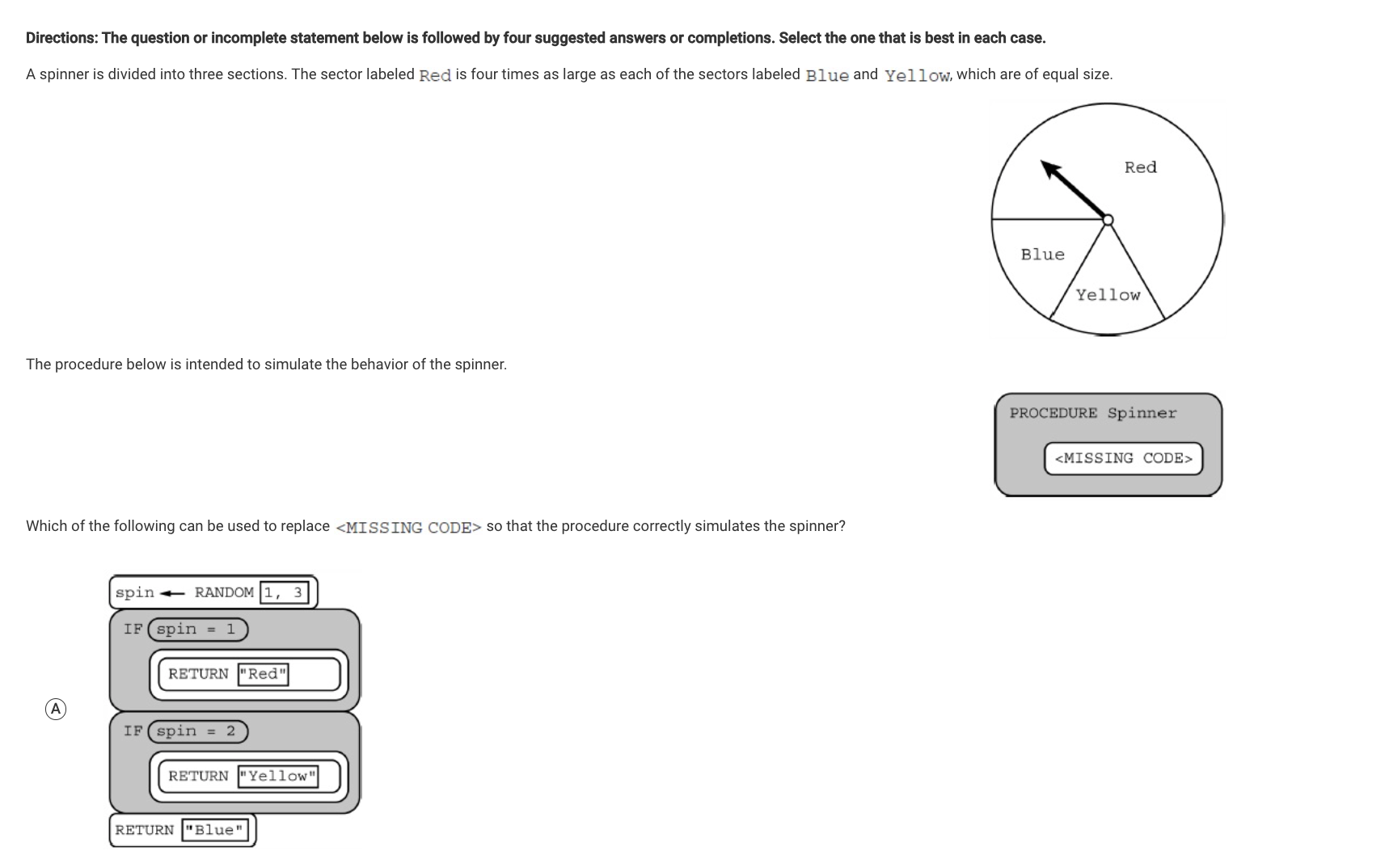
- This was a cool problem to solve, interesting to see how pseudo code works for random problems and interesting to think of ways to model things like a spinner with a randInt function
- Pseudo works really well visually here
Example 4:
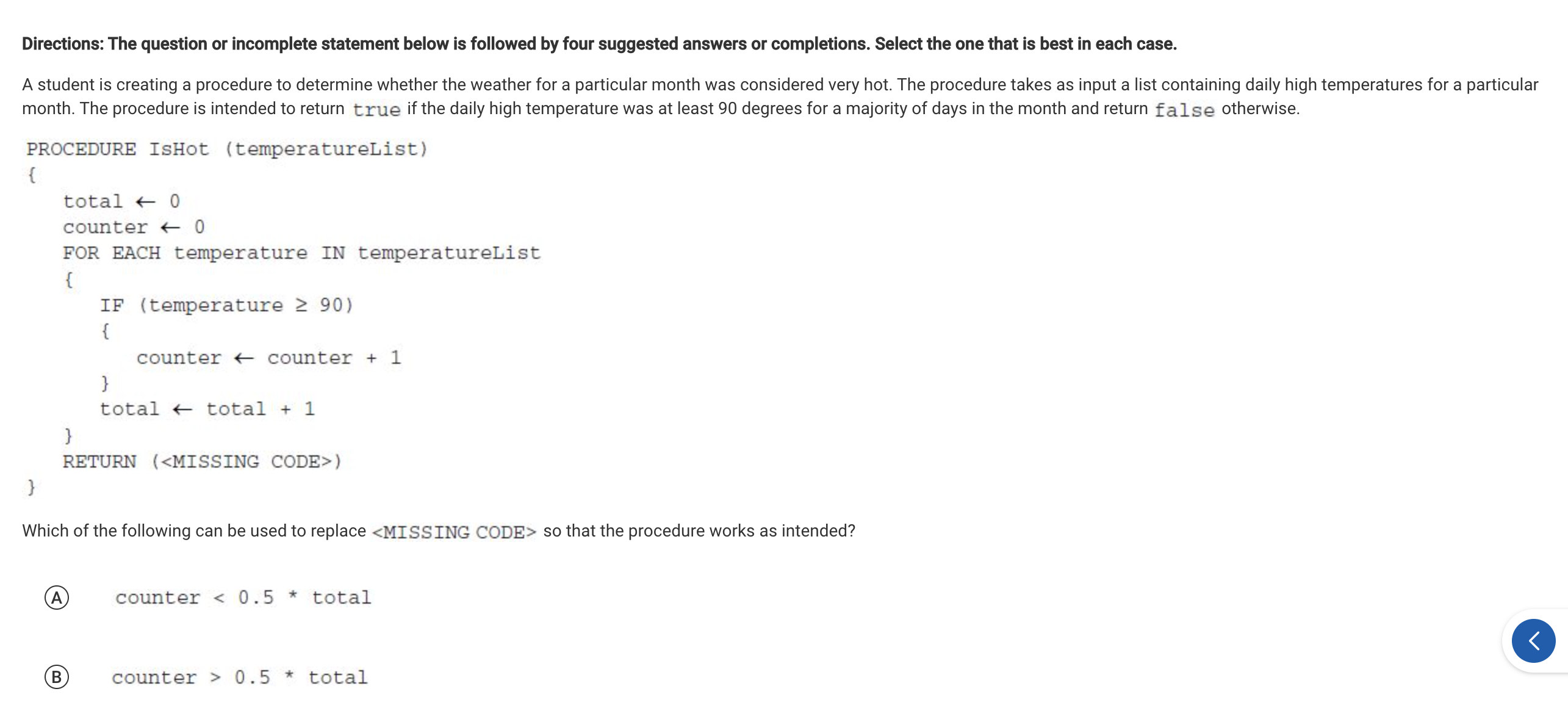
- This one was definitely hard to understand
- Lots of code written like python or js but in different formats screwed with my head a bit
- Helped me learn pseudo if statements and finding majorities
Example 5:
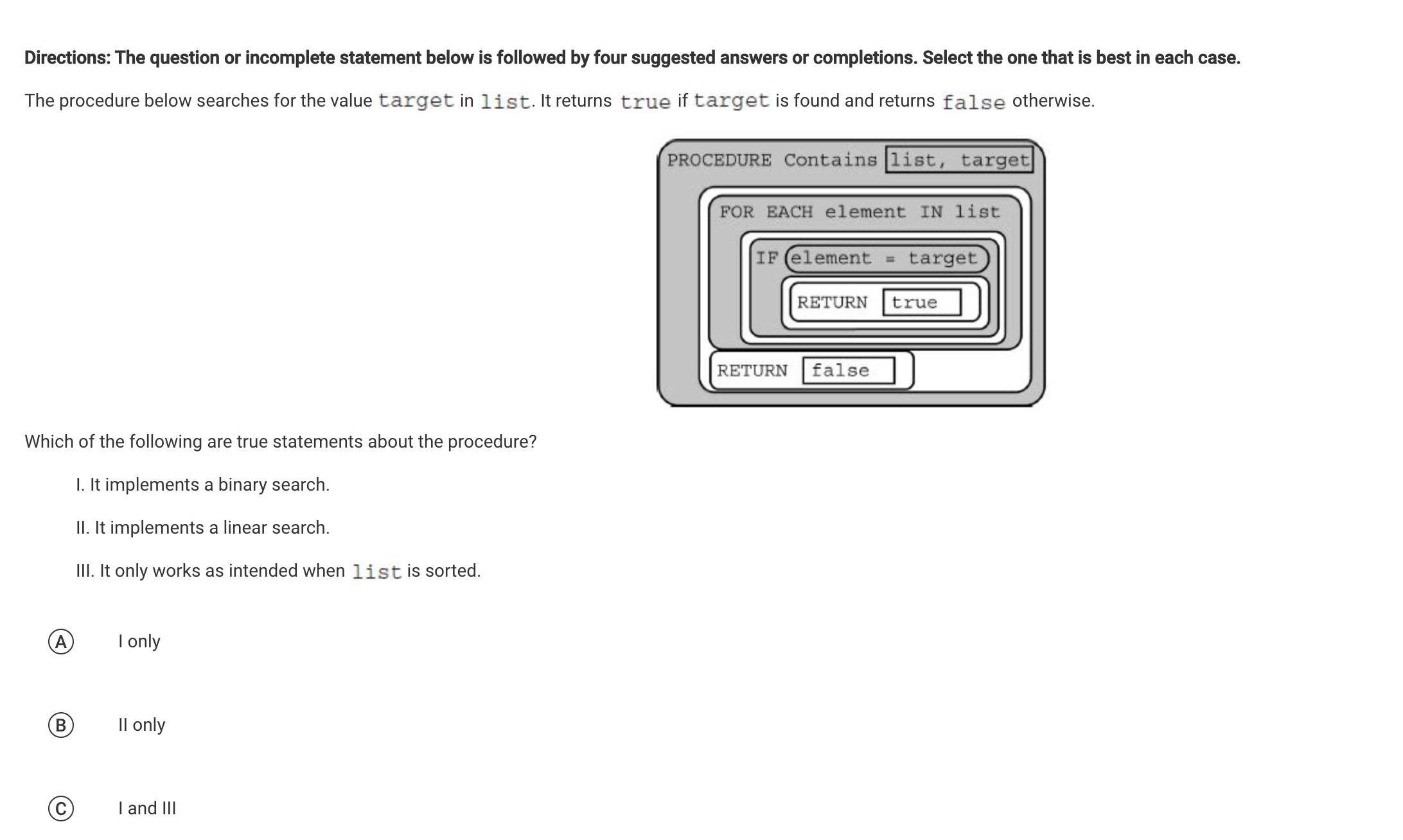
- Interesting problem, structured different than usual with pseudo blocks within blocks
- Required me to look back at the Nighthawk Coders student lessons to figure out what a linear vs binary search was
Example 6:
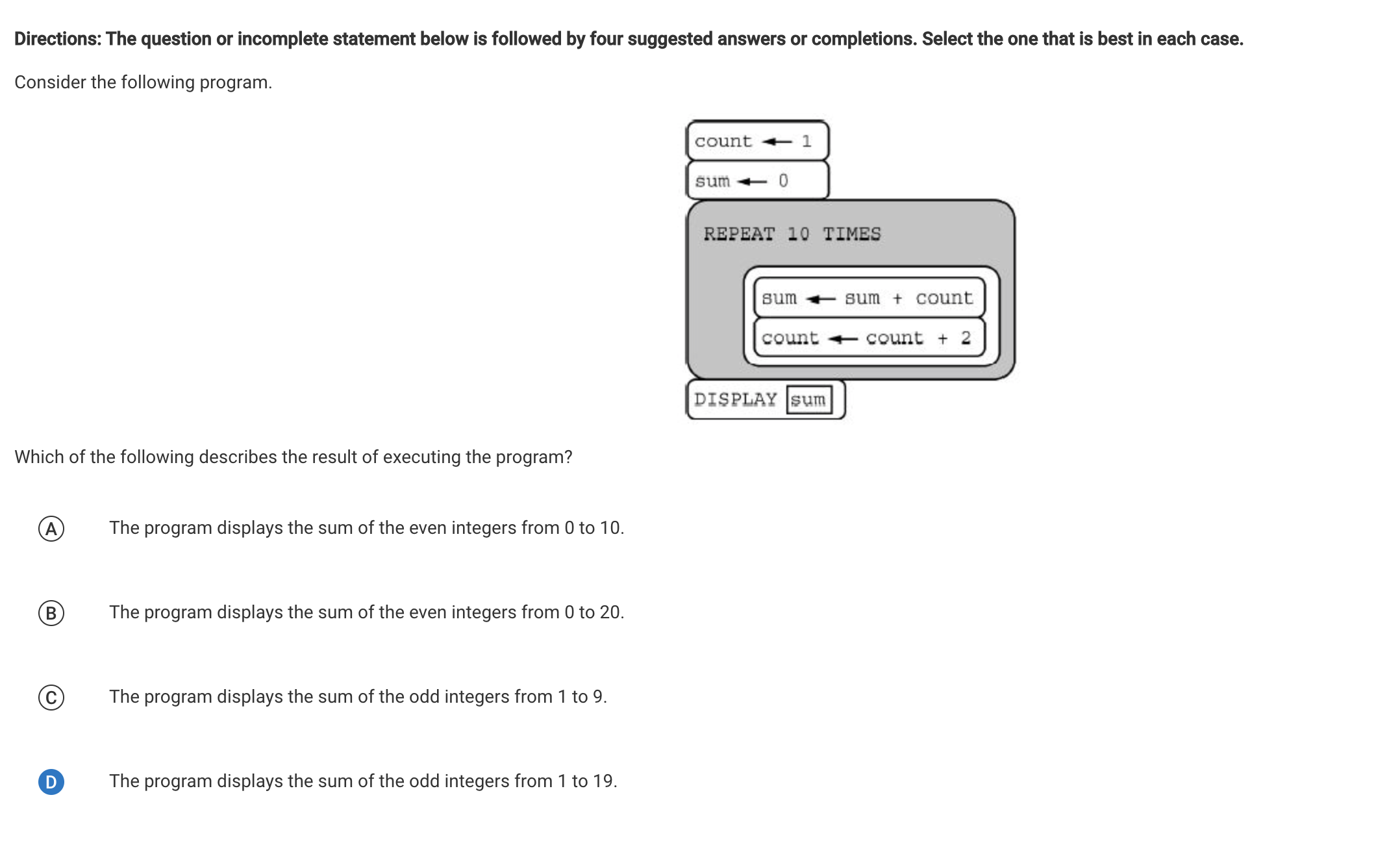
- This one was expressely hard to wrap my head around logic wise
- Found it helpful to model the situation by writing out the first few outputs